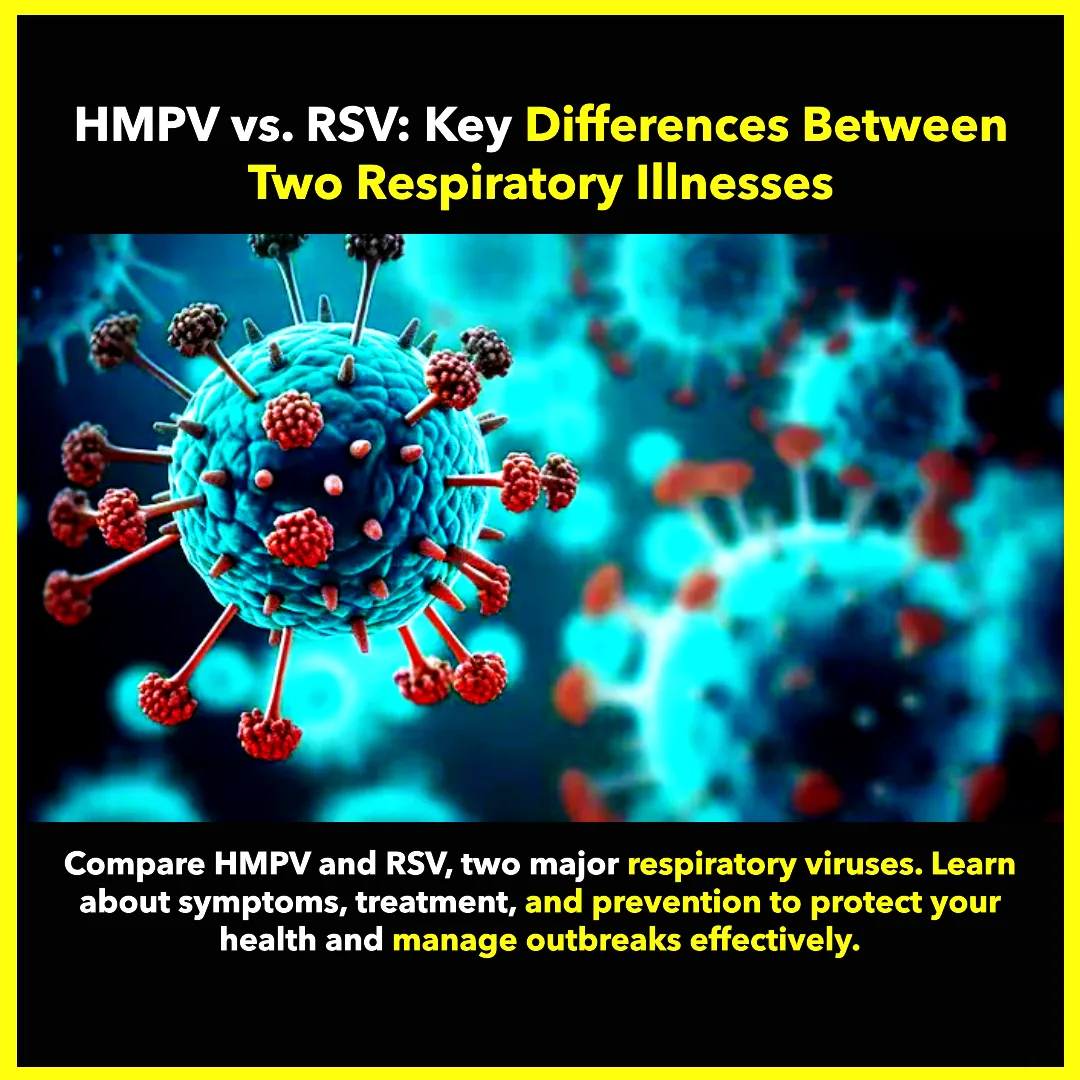Respiratory illnesses are common, especially during colder months, and two viruses often mistaken for each other are Human Metapneumovirus (HMPV) and Respiratory Syncytial Virus (RSV). Both can cause similar symptoms, particularly in vulnerable groups like children and the elderly. However, understanding their differences is crucial for effective diagnosis, treatment, and prevention.
Overview of HMPV and RSV
What is HMPV?
Human Metapneumovirus (HMPV) belongs to the Paramyxoviridae family and primarily affects the respiratory tract. Discovered in 2001, HMPV is known to cause infections that range from mild colds to severe respiratory illnesses such as bronchiolitis and pneumonia. It is highly contagious, spreading through respiratory droplets and contaminated surfaces.
What is RSV?
Respiratory Syncytial Virus (RSV) is another virus in the Paramyxoviridae family and was identified much earlier, in 1956. It is a leading cause of respiratory infections in young children, often resulting in hospitalizations. RSV is particularly dangerous for infants, older adults, and immunocompromised individuals.
Key Differences Between HMPV and RSV
- Discovery Timeline:
- HMPV: Identified in 2001.
- RSV: Discovered in 1956 and extensively studied since then.
- Age Groups Affected:
- HMPV: Affects individuals of all ages, though severe cases are more common in infants, the elderly, and those with underlying conditions.
- RSV: Primarily impacts young children under two years old but also poses risks to older adults.
- Seasonality:
- HMPV: Outbreaks typically occur in late winter and early spring.
- RSV: More prevalent in the fall and winter months, with outbreaks sometimes extending into early spring.
- Symptoms: Both viruses cause respiratory symptoms, but there are subtle differences:
- HMPV Symptoms: Fever, cough, nasal congestion, wheezing, and shortness of breath. Severe cases may lead to bronchiolitis or pneumonia.
- RSV Symptoms: Runny nose, decreased appetite, coughing, sneezing, fever, and wheezing. In severe cases, it can cause apnea in infants.
- Diagnosis: Both viruses are diagnosed using similar methods, but testing can differentiate them:
- PCR (Polymerase Chain Reaction) tests are highly effective for detecting both HMPV and RSV.
- Rapid antigen tests are available but may be less sensitive than PCR.
For more information on diagnostic methods, check our Health Diagnostics Guide.
Treatment Options
HMPV Treatment:
Currently, there are no specific antiviral drugs for HMPV. Treatment focuses on relieving symptoms:
- Over-the-Counter Medications: To reduce fever and pain.
- Oxygen Therapy: For severe cases involving breathing difficulties.
- Supportive Care: Ensuring proper hydration and monitoring symptoms.
RSV Treatment:
While there is no universal cure, certain therapies are available for high-risk groups:
- Palivizumab: A monoclonal antibody used to prevent severe RSV in high-risk infants.
- Supportive Care: Similar to HMPV, focusing on symptom management.
- Hospitalization: Required for severe cases, especially in infants.
Prevention Strategies
Both HMPV and RSV can be mitigated through preventive measures:
- Hand Hygiene: Wash hands frequently with soap and water.
- Avoid Close Contact: Especially with individuals showing symptoms of illness.
- Disinfect Surfaces: Regularly clean commonly touched objects.
- Vaccination: RSV vaccines are in development and have recently shown promising results. For HMPV, vaccine research is ongoing.
For detailed prevention tips, visit Best Practices for Preventing Respiratory Illnesses.
Why Differentiating HMPV and RSV Matters
Accurate identification of the virus is critical for public health measures and individual care. Since both viruses pose unique challenges, understanding their differences helps in managing outbreaks, allocating healthcare resources, and protecting vulnerable populations.
Final Thoughts
HMPV and RSV are significant contributors to respiratory illnesses worldwide. Although they share many similarities, their distinct characteristics require tailored approaches to diagnosis, treatment, and prevention. By staying informed and adopting preventive measures, individuals can reduce the risk of infection and contribute to broader public health efforts.
For more information on respiratory health, explore our resources at epicinfinite.com.
Internal Links:
External Links:










